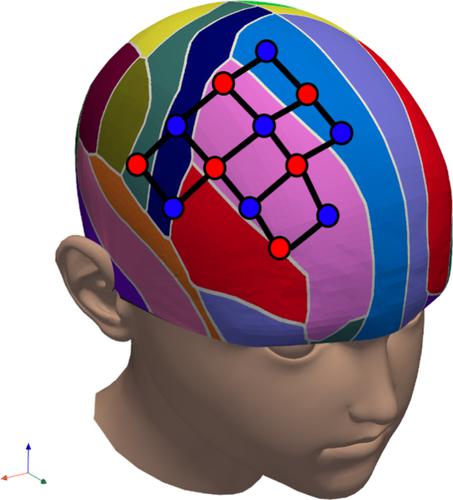当前位置:
X-MOL 学术
›
Hum. Brain Mapp.
›
论文详情
Our official English website, www.x-mol.net, welcomes your feedback! (Note: you will need to create a separate account there.)
Transcranial brain atlas‐based optimization for functional near‐infrared spectroscopy optode arrangement: Theory, algorithm, and application
Human Brain Mapping ( IF 4.8 ) Pub Date : 2020-12-17 , DOI: 10.1002/hbm.25318 Yang Zhao 1 , Xiang Xiao 1, 2 , Yi-Han Jiang 1 , Pei-Pei Sun 1 , Zong Zhang 1 , Yi-Long Gong 1 , Zheng Li 3, 4, 5 , Chao-Zhe Zhu 1, 4, 5
Human Brain Mapping ( IF 4.8 ) Pub Date : 2020-12-17 , DOI: 10.1002/hbm.25318 Yang Zhao 1 , Xiang Xiao 1, 2 , Yi-Han Jiang 1 , Pei-Pei Sun 1 , Zong Zhang 1 , Yi-Long Gong 1 , Zheng Li 3, 4, 5 , Chao-Zhe Zhu 1, 4, 5
Affiliation

|
The quality of optode arrangement is crucial for group imaging studies when using functional near‐infrared spectroscopy (fNIRS). Previous studies have demonstrated the promising effectiveness of using transcranial brain atlases (TBAs), in a manual and intuition‐based way, to guide optode arrangement when individual structural MRI data are unavailable. However, the theoretical basis of using TBA to optimize optode arrangement remains unclear, which leads to manual and subjective application. In this study, we first describe the theoretical basis of TBA‐based optimization of optode arrangement using a mathematical framework. Second, based on the theoretical basis, an algorithm is proposed for automatically arranging optodes on a virtual scalp. The resultant montage is placed onto the head of each participant guided by a low‐cost and portable navigation system. We compared our method with the widely used 10/20‐system‐assisted optode arrangement procedure, using finger‐tapping and working memory tasks as examples of both low‐ and high‐level cognitive systems. Performance, including optode montage designs, locations on each participant's scalp, brain activation, as well as ground truth indices derived from individual MRI data were evaluated. The results give convergent support for our method's ability to provide more accurate, consistent and efficient optode arrangements for fNIRS group imaging than the 10/20 method.
中文翻译:

基于经颅脑图谱的功能性近红外光谱光极排列优化:理论、算法和应用
使用功能性近红外光谱 (fNIRS) 时,光极排列的质量对于群体成像研究至关重要。先前的研究已经证明,当个体结构 MRI 数据不可用时,以手动和基于直觉的方式使用经颅脑图谱 (TBA) 来指导光极排列是很有前景的。然而,使用TBA优化光极排列的理论基础尚不清楚,导致人工和主观应用。在这项研究中,我们首先使用数学框架描述了基于 TBA 的光极排列优化的理论基础。其次,基于理论基础,提出了一种在虚拟头皮上自动排列光极的算法。由此产生的蒙太奇被放置在每个参与者的头上,由低成本和便携式导航系统引导。我们将我们的方法与广泛使用的 10/20 系统辅助光极排列程序进行了比较,使用手指敲击和工作记忆任务作为低级和高级认知系统的示例。评估了性能,包括光极蒙太奇设计、每个参与者头皮上的位置、大脑激活以及源自个人 MRI 数据的地面实况指数。结果为我们的方法能够为 fNIRS 组成像提供比 10/20 方法更准确、一致和有效的光极排列的能力提供了会聚支持。使用手指敲击和工作记忆任务作为低级和高级认知系统的示例。评估了性能,包括光极蒙太奇设计、每个参与者头皮上的位置、大脑激活以及源自个人 MRI 数据的地面实况指数。结果为我们的方法能够为 fNIRS 组成像提供比 10/20 方法更准确、一致和有效的光极排列的能力提供了会聚支持。使用手指敲击和工作记忆任务作为低级和高级认知系统的示例。评估了性能,包括光极蒙太奇设计、每个参与者头皮上的位置、大脑激活以及源自个人 MRI 数据的地面实况指数。结果为我们的方法能够为 fNIRS 组成像提供比 10/20 方法更准确、一致和有效的光极排列的能力提供了会聚支持。
更新日期:2020-12-17
中文翻译:

基于经颅脑图谱的功能性近红外光谱光极排列优化:理论、算法和应用
使用功能性近红外光谱 (fNIRS) 时,光极排列的质量对于群体成像研究至关重要。先前的研究已经证明,当个体结构 MRI 数据不可用时,以手动和基于直觉的方式使用经颅脑图谱 (TBA) 来指导光极排列是很有前景的。然而,使用TBA优化光极排列的理论基础尚不清楚,导致人工和主观应用。在这项研究中,我们首先使用数学框架描述了基于 TBA 的光极排列优化的理论基础。其次,基于理论基础,提出了一种在虚拟头皮上自动排列光极的算法。由此产生的蒙太奇被放置在每个参与者的头上,由低成本和便携式导航系统引导。我们将我们的方法与广泛使用的 10/20 系统辅助光极排列程序进行了比较,使用手指敲击和工作记忆任务作为低级和高级认知系统的示例。评估了性能,包括光极蒙太奇设计、每个参与者头皮上的位置、大脑激活以及源自个人 MRI 数据的地面实况指数。结果为我们的方法能够为 fNIRS 组成像提供比 10/20 方法更准确、一致和有效的光极排列的能力提供了会聚支持。使用手指敲击和工作记忆任务作为低级和高级认知系统的示例。评估了性能,包括光极蒙太奇设计、每个参与者头皮上的位置、大脑激活以及源自个人 MRI 数据的地面实况指数。结果为我们的方法能够为 fNIRS 组成像提供比 10/20 方法更准确、一致和有效的光极排列的能力提供了会聚支持。使用手指敲击和工作记忆任务作为低级和高级认知系统的示例。评估了性能,包括光极蒙太奇设计、每个参与者头皮上的位置、大脑激活以及源自个人 MRI 数据的地面实况指数。结果为我们的方法能够为 fNIRS 组成像提供比 10/20 方法更准确、一致和有效的光极排列的能力提供了会聚支持。


























 京公网安备 11010802027423号
京公网安备 11010802027423号